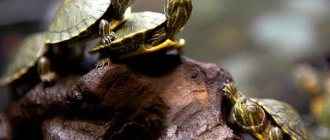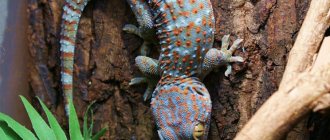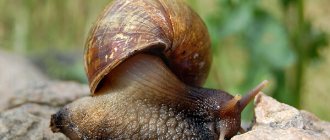Turtles are popular reptiles, both land and aquatic, in the latter case they become a real decoration of the aquarium. They are very interesting to watch, and they live an order of magnitude longer than aquarium fish. The red-eared turtle, also known as the yellow-bellied turtle, is especially loved by breeders. This reptile proves that turtles are not as slow as they seem, they do not hide in their shells at the slightest rustle and can scare opponents... with a loud hiss. The owners are sure that it is quite difficult to find a pet with such character and charisma! What is a red-eared turtle, and how to provide a decent life for such an extraordinary four-legged inhabitant?
Description
In adult individuals, the shell is dotted with many wrinkles. The average size of red-eared turtles depends on the species, some representatives reach a length of 28 cm. A specific feature of these reptiles is the presence of a small spot in the eye area.
Another property that owners of these pets pay attention to is their ability to change color. Although they cannot transform instantly like chameleons, turtles gradually adapt to their environment over the years. So, a young individual has a green color, but in old age it turns black. The ventral shell of turtles is bright yellow, with dark round spots.
Yellow-bellied reptiles grow unusually: in the first 18 months their size increases to 7.5 cm, then the growth rate slows down, and each year the turtle becomes larger by only 12.5 mm. As a result, the pet grows to 20 cm or more, so all the sellers’ assurances that the breed is dwarf turn out to be a deception.
Eating at home
It is very important to find out what a red-eared slider living at home eats. Its health depends on how well the reptile's feeding is organized.
The red-eared slider eats a variety of foods at home. For example:
- food intended for aquarium fish,
- vegetables,
- small fish,
- insects,
- aquarium plants,
- animals from the invertebrate class.
With a pet like the red-eared turtle, you need to make feeding not only varied, but also balanced. In addition, overeating should not be allowed.
Young individuals tend to be omnivorous. As they grow up, they begin to choose plant food. It will be most convenient to use special food for aquatic turtles, since they contain all the substances and elements they need.
It is also worth finding out how long a red-eared turtle can go without eating. This will help you figure out how often to feed her. This question is ambiguous. How long a red-eared turtle can go without eating depends on its age and well-being. Small turtles require more food than adult turtles. They should be fed daily. After a year, the frequency of feedings should be reduced to once every two days. Mature individuals can go without food for a week, sometimes even two.
Diet features
The menu of adult turtles and young ones is strikingly different. In order for young reptiles to actively grow and fully develop, they need food high in animal protein. It is recommended to feed babies once a day, but not more often. In addition, the tank must contain vegetation, including algae, which these inhabitants eat well.
An adult red-eared turtle, whose size exceeds 12 cm, eats a mixed diet - its diet consists of 50% plant food and 50% animal food. The diet changes - the reptile should eat 2-3 times a day. The owner gives the pet animal products and feed, and between feedings the turtle feasts on edible plants.
The volume of a single serving depends on the size of the reptile. For a baby, 2-3 pieces of 1 cm3 are enough, and for an older individual, pieces several times larger. Also, owners should not forget about the following feeding habits of red-eared turtles:
- Do not give frozen or hot food - it should be at room temperature;
- reptiles eat only foods that have not been heat-treated;
- juvenile turtles, in fact, are predators, and individuals mainly feed on fish - experienced breeders recommend introducing live fish into the tank, which the reptiles can eat;
- The pets' menu should be varied - they can be given gammarus and dry food, but they should not be the basis of the diet;
- adult reptiles are omnivores, and when composing a diet, you should not focus solely on your pet’s food preferences - not everything they eat with pleasure is healthy.
Items and tools required for maintenance
Prices for everything that is needed to keep a turtle can vary greatly depending on the manufacturer, type of materials, and store. Therefore, we present you with a list of necessary things:
- 200 liter aquarium;
- 100W water heater;
- filter (can be internal, but preferably external);
- ultraviolet lamp for aquatic turtles with UVB 5%;
- heating lamp;
- lamp;
- thermometer;
- land/shore/island.
The list is large, but each of the items in it is necessary to create good conditions.
Under no circumstances should you place the aquarium in a draft or direct sunlight. The turtle must have free access to land; this place must be heated using a special lamp. Cubs need a little more heating than adult turtles: 26-27 degrees for water and up to 32 for land. If you don't have a good filter, change the water every 2-3 days. You can feed turtles with branded special foods containing calcium. Adults and cubs should not be kept together: this will lead to numerous injuries.
Provide a stable, durable surface for your terrarium. The aquarium for the red-eared turtle is very voluminous, plus the weight of all the equipment, water and land - as a result, the total weight reaches more than 300 kilograms. Not every table is suitable for such a device.
Equipped aquaterrarium for turtles
Do not buy a small aquaterrarium in the hope that the turtle is still small, and over time, when it grows up, you will acquire a larger capacity. These animals grow quite quickly, and from childhood they need space. The turtle will not remain small in insufficient space, but its shell will be curved, and it will often get sick.
There should be enough water in the aquarium so that the turtle can easily turn over in it, that is, more than the width of the shell. It is better to purchase an artificial land or island in a store. If you decide to make it yourself, please note that such dry land must meet the following requirements:
- sustainability;
- non-toxic;
- textured surface;
- absence of burrs and sharp corners.
In total, the island should occupy about 25% of the surface of the aquaterrarium. The temperature on it should be 10 degrees higher than that of the water, but no more, in order to prevent the turtle from overheating.
Types of food for turtles
The following can be used as food for freshwater turtles:
- non-fatty fish - give pieces of pollock, gobies, cod, blue whiting, etc.;
- meat: beef, rabbit, turkey;
- liver (preference is given to beef);
- hearts and navels, preferably chicken;
- gammarus, excluded dry;
- earthworms;
- daphnia;
- crickets (legs are first removed) and grasshoppers;
- bugs;
- feed cockroaches;
- fire;
- caterpillars (not shaggy ones);
- snails
You can diversify your pet's diet with mollusks, snails (marise, pond snail, reel), tadpoles, squid, and frogs. You need to be careful with seafood - they are given irregularly, in small quantities.
Aquatic plants can become plant food for turtles. They happily eat duckweed, hyacinths, etc. In summer, flowers and grass growing in the meadows are a treat for reptiles: clover, daisies, dandelions, rhubarb, plantain leaves. As for vegetables, you can feed turtles exclusively with carrots and lettuce; it is not recommended to include other crops in the reptile menu.
It is necessary to supplement the diet with vitamin and mineral supplements if the turtle’s living conditions are far from ideal - in the absence of ultraviolet lighting and temperature conditions.
Breeding red-eared turtles
Reptiles reach sexual maturity at different ages; the process is influenced by the sex of the animal and lifestyle. If they live in an aquaterrarium, then females reach sexual maturity by 5-6 years, males by 4 years. In nature, turtles mature only at 8 years of age. The “wedding” period for reptiles occurs in the first spring months. The male approaches the female he likes, pokes his muzzle into her and begins to tickle her chin with his claws.
The female lays her eggs on land, in an area that she first prepares: she moistens it with water from her own anal bladder and digs a hole. The clutch consists of 5-10 eggs, the size of which is no more than 4 cm. When the laying process is completed, the female carefully buries the future offspring.
The incubation period is long and lasts up to 21.5 weeks. An interesting fact is that the sex of hatching turtles depends on the temperature: if the indicator remains above 30°C, then females appear, and if below 27°C, then males.
Reproduction
Whether a turtle is sexually mature or not depends on its size. Approximately: 2-4 years for a male and a shell of more than 10 cm and 2-5 years for a female and 12-13 cm.
Mating games begin with a sexually mature male (although young ones can also try), with a kind of courtship. During which he swims in front of the female, with his muzzle towards her and waves his paws very quickly in front of her eyes.
In nature, breeding occurs in March and June, but domestic turtles can mate throughout the year.
When a turtle is pregnant, that is, carrying eggs, you need to prepare a special place for her where she will lay these eggs. A female can carry eggs without a male, but they will not be fertilized!
You can gently feel the eggs between the carapace and her hind legs, but be careful, they are very fragile. The female will instinctively look for a place to nest and lay eggs.
A clutch can contain up to 20 eggs for a large female. If the conditions are suitable, then the female lays up to 3-4 clutches per season.
In a home aquaterrarium, the female signals preparation for reproduction by changing her behavior.
She becomes very restless, imitates digging movements with her hind legs and tries to get out of the aquarium. Also during this time, she spends more time on land and needs calcium and UV rays.
The place where she can lay her eggs is very important; if there is not one, she will lay them in the water or even carry them further, which will cause them to harden. If you see that a turtle has laid one or two eggs, try to make a nest for it
Most likely, the rest of the clutch has not yet emerged and she is still pregnant
If you see that a turtle has laid one or two eggs, try to make a nest for it. Most likely, the rest of the clutch has not yet hatched and she is still pregnant.
If the female does not lay eggs, they will harden and can cause infection and death of the animal.
Even a properly prepared nest is not a guarantee that everything will go well, since the turtle may be old, tired, or sick.
If she tries to lay her clutch, but nothing works, then it is better to take her to the veterinarian.
Possible signs of problems: decreased activity, heavy breathing, depressions or swelling near the cloaca.
If there is an unpleasant liquid coming out of it or there is an odor, then the eggs inside may have broken. If you have any health problems with your red-eared slider, contact your veterinarian immediately!
Mating games:
An ideal aquaterrarium for red-eared turtles
There are many requirements that should be met before a yellow-bellied turtle finds its new home, especially if the owner wants to provide the reptile with the best living conditions:
- It is better to select a long, narrow tank with low sides;
- the minimum volume of an aquaterrarium for one or two individuals is 120 liters;
- the water level corresponds to the size of the pet’s shell - this is necessary so that the reptile can roll over;
- the tank must have a shelf - flat and non-slip;
- suitable water temperature is 25°C, sushi temperature is 32°C; in order to maintain the indicators at the same level, it is recommended to equip the container with a special heating device;
- water is replaced and cleaned as needed;
- You can also equip the aquarium with a filtration system - it is better for small turtles to install an external filter, for adults - an internal one;
- it is advisable to install an ultraviolet lamp - but not lower than 25 cm from the bottom, so that the reptile does not burn its eyes;
- turtles love to bask in the sun and you can take your pet out into the sun, but start with short, 5-7 minute sunbathing. Gradually, the time of procedures is allowed to increase;
- the tank should have a secluded, dark area where the reptile can hide to avoid overheating.
Hibernation of red-eared turtles
Red-eared turtles tend to hibernate, and some zoologists argue that this is vital for the reptiles. However, most scientists have a different opinion: hibernation is a forced measure caused by a decrease in ambient temperature. And if the turtle is kept in comfortable conditions, then it does not need to fall asleep in winter.
Experienced owners of red-eared turtles do not recommend artificially creating conditions close to natural so that the reptile sleeps; this will be very stressful for it.
Pneumonia
As it turns out, pneumonia can develop not only in humans, but also in turtles. This happens when the reptile’s body becomes hypothermic. The disease is considered serious, and if the pet does not receive timely treatment, there is a risk of death.
Signs of the disease can be noticed within 24 hours after the onset of the inflammatory process. The reptile will be on land or swimming on the surface more often, as it will lose the ability to dive. Pneumonia is treated with medication or using traditional recipes. It is possible to achieve the greatest efficiency only with an integrated approach:
Intramuscular injections (drugs "Baytril", "Amikacin") are required - consultation with a veterinarian is required, as it is important to determine the exact dosage. If the dose is determined incorrectly, the medicine will not only not help, but can also lead to the death of the turtle.
Methods of traditional medicine - steam inhalations and warm baths with a decoction of chamomile flowers have a high effect
The reptile is first held over steam and then immersed in liquid for 25-30 minutes. The optimal temperature of the solution for the treatment of pneumonia should not be higher than 30°C.
Interesting features of the breed
Turtles are amazing creatures that appeared on Earth long before it was inhabited by mammals and even lizards. And the “little red ones” are no exception; they are funny, smart and very active. The owner may also be interested in the following facts:
- in captivity, turtles can live up to 40 years, and in swamp turtles the life expectancy reaches 80 years;
- in Russia, turtles with a red spot on the head are called red-eared, and in Germany they are also called red-cheeked;
- these reptiles can live with their own kind, but other representatives of the cold-blooded family are not good neighbors for them;
- Many fishermen use red-eared turtle eggs as bait.
The red-eared turtle is not just an adorable reptile that you can get on a whim. It is a long-liver and requires special conditions, so before purchasing you should definitely weigh the pros and cons.
Appearance
The main part of the body of the red-eared turtle is occupied by a dense shell consisting of horny plates. Its upper part is called the carapace, and the lower part is called the plastron. Limbs, a head and a triangular tail peek out from under the shell. In case of danger, turtles can retract their heads and fold their legs compactly so that the predator cannot grab onto the soft tissue.
The size of an adult turtle can vary from 18 to 30 cm and depends on age, sex and subspecies. Females are noticeably larger than males. Growth rates differ at different periods of life: if young turtles can add 7-8 cm per year, then adult turtles grow by no more than 1.5 cm in 12 months until they reach their maximum size.
Juvenile red-eared turtles have a bright green carapace, which becomes olive or brown with yellow stripe patterns as they age. The head is located on a flexible neck, the pattern on its surface consists of green, black and yellow stripes. Just behind the eyes are two almost oval red or yellow spots. The plastron is bright yellow with green spots.
The reptile's limbs are short, the fingers on each of them end in long claws. The membranes between the toes help turtles swim actively.
Currently, scientists distinguish three subspecies of red-eared turtles, which have slight differences in appearance.
Red-eared turtles can be called long-lived. With proper care, reptiles can live 20-25 years, and some specimens can even reach 40 years.











